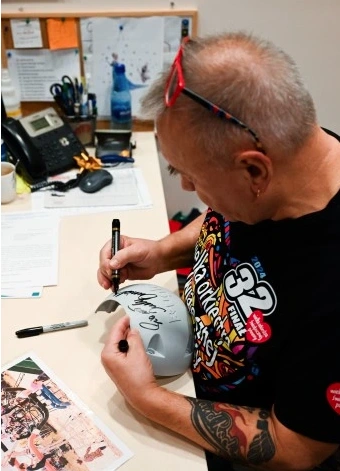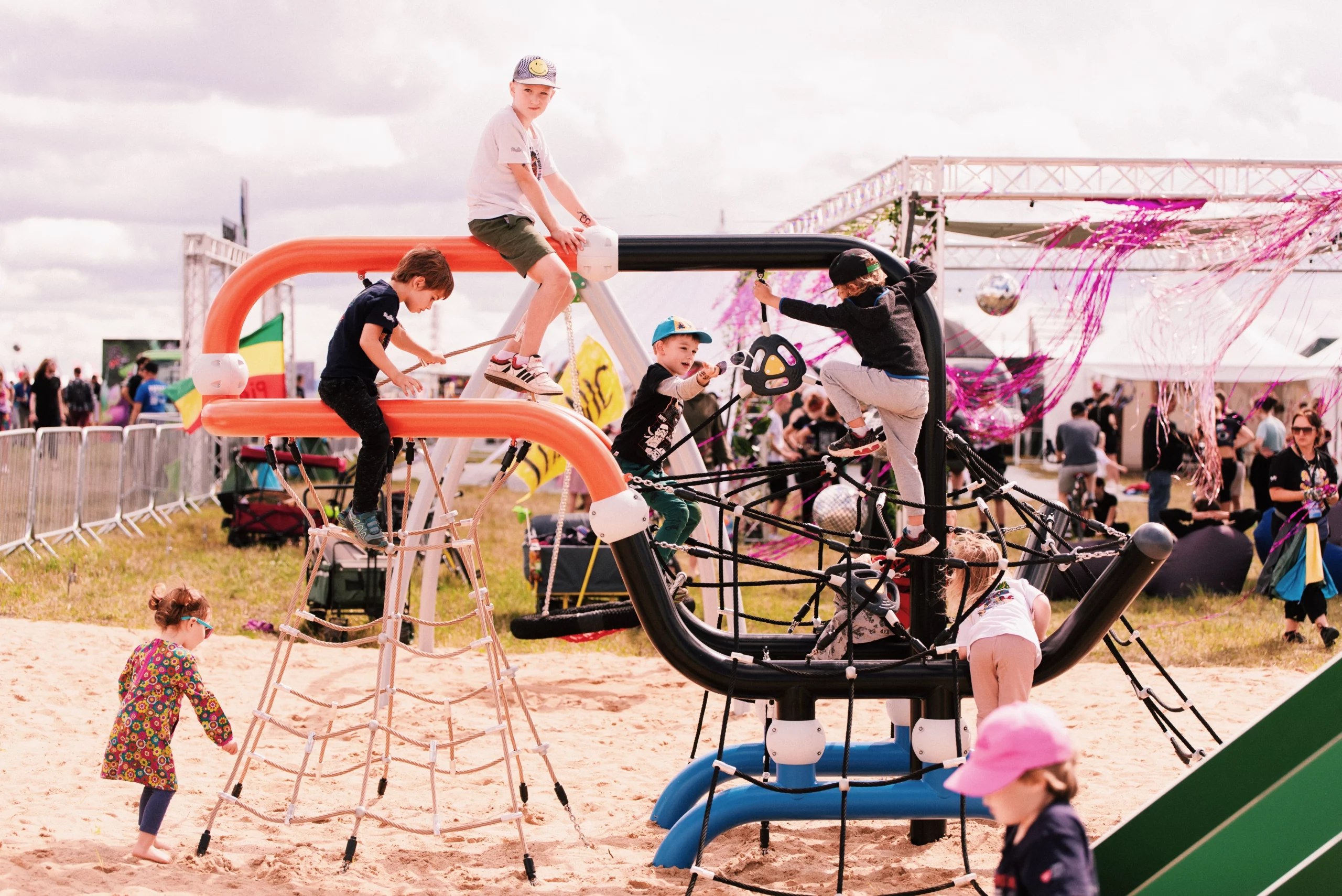
Przemek Staroń — psychologist, educator, and author of the bestselling School of Heroines and Heroes series, Teacher of the Year 2018, and finalist of the Global Teacher Prize 2020 — recently gave a lecture for Buglo as part of the Buglo Experts Circle initiative. His perspective on playground and recreational space design opens up new ways of thinking, showing just how important the educational function of these places can be. Below, we share three key insights from the event that have particularly resonated with us.
The most important learning mechanisms in children do not occur through words, but through action. Developmental psychology clearly tells us: we learn through modelling — by imitating the behaviours of adults. A child won’t do what you tell them to do — they’ll do what they see you doing.
But that’s not all. Imitation is also the first step toward role-play — a natural form of play through which a child experiments with different behaviour patterns, emotions, and identities. Through role-play, a child learns, practises social skills, and builds self-awareness and understanding of the world.
The playground is a stage for relationships. The child watches the adult, the older child, the peer. If adults are active, show curiosity, and are genuinely engaged, the child absorbs it all.
Through play, a child activates all the key developmental processes: attention, intrinsic motivation, emotional regulation, flexible thinking, and creativity. Psychology shows us that during play, a child enters what’s called the “zone of proximal development” — a moment when they learn things they can’t yet do alone, but can do with help or thanks to the environment.
Unlike school, which often relies on fear and assessment, the playground offers a safe space for exploration — free of consequences, yet rich in joy and engagement.
The way we communicate with children — including through architecture — shapes how they see themselves. In a culture of excessive safety, we tell children the world is dangerous, that they must be careful, that “you might fall.” But research shows that children who hear “be brave” develop greater mental resilience and a sense of agency.
The playground can nurture children through challenge, not just through control. It’s not about physical risk, but developmental challenge: jumping off, climbing up, making decisions
Children are at different stages — and playgrounds should be too. Not all children develop in the same way or at the same pace. That’s why playgrounds should be diverse. Not just “one size fits all” equipment, but several different ones adapted to different ages and abilities. A toddler will choose something simple, an older child something more demanding. Every child will find something right for them, suited to their strength and courage.
The insights from Przemek Staroń’s lecture are valuable for both those designing spaces and those spending time with children on playgrounds. They show how to support play wisely, how to foster development and build connection. Because the truth is — we learn best through play, and playgrounds and education go hand in hand.




Dedicated playgrounds
Collections
Shortcuts
Fast action
Buglo Play Ltd.
4 BoWiD St.
75-209 Koszalin
NIP 5272952059